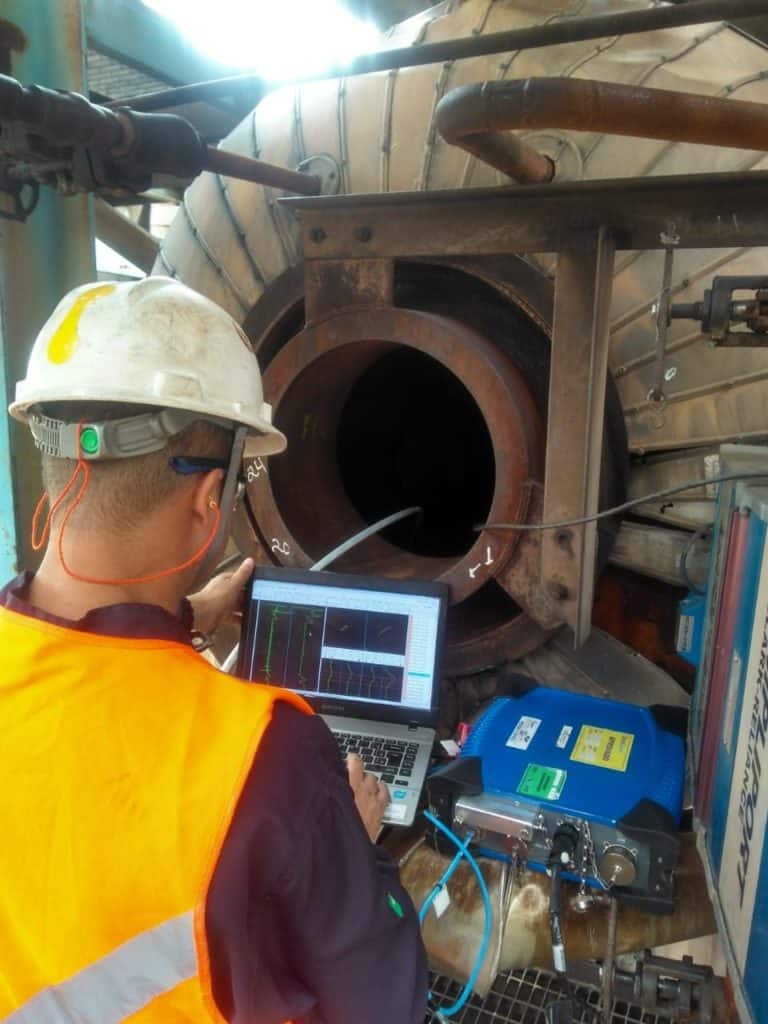ET Testing: A Guide to Understanding Eddy Current

Electromagnetic testing (ET) is a non-destructive testing method that uses the principle of electromagnetic induction for the detection of flaws in surface and subsurface levels. Eddy current testing (ECT) is a type of electromagnetic nondestructive testing (NDT) method. However, the terminologies for ET testing and ECT are often interchangeably used in industries for their same NDT principle. ECT has been a choice of industries for detecting flaws like cracks or corrosion in their wide variety of manufactured materials. In this article, we will discuss in detail the eddy current testing method.
Eddy-Current Testing: An Overview
The eddy current testing method has a simple operating mechanism. It uses the principle of electromagnetic induction, in which a wound coil is energized with an alternating current to induce a magnetic field. The oscillation of this magnetic field and current running through the conductive coil has a similar frequency. As the magnetic field approaches near the conductive material to be tested, an opposing current—eddy current—is induced in the material.
During the testing of conductive material, an eddy current probe detects changes in the electrical conductivity or the induced magnetic field. This is an indication of a flaw in the metal surface. Eddy current probes are sensitive to these changes and can easily identify and transmit this data to the operator.
Advanced eddy current probes and software are used to accurately detect the flaws from complex geometrical materials. The probe types may include tubing array, surface array, handheld, or calibration-type, based on the operating mechanism. Industries use ET/ECT for testing a wide range of applications including pipelines, heat exchangers, and storage tanks.
Advantages and Limitations of Using Eddy Current Testing
Eddy current testing is mostly preferred for detecting a surface flaw in tubes, or other conductive material surfaces. More advanced ECT probes are capable of detecting subsurface flaws as well as inspecting uneven surfaces. Eddy current provides the following NDT advantages:
- Flaws such as surface or near-surface cracks and corrosion can be easily detected.
- Surface preparation is not required to perform testing.
- Easily detect flaws through conductive or non-conductive surface coatings.
- Ability to measure thickness and hardness of some materials.
- Easily detect flaws in certain materials with complex geometries.
ET testing also has its own set of limitations. These may include:
- A conductive surface is required for flaw detection.
- The thickness of the metal workpiece can affect the test results. Thicker materials may require an advanced probe with a deep penetration feature.
- Difficult to detect flaws may be parallel to the material surface.
- User-dependent. Trained professionals are required to minimize the risk of inaccurate analysis and for ideal equipment utilization.
Applications of Eddy Current in Nondestructive Testing
ECT and more specifically Eddy Current Array (ECA) is preferred in a wide range of industries for detecting surface flaws in their different applications. Industries like aerospace, automotive, and oil and gas use this NDT method for detecting flaws in the early stages of production. This early detection can prevent small flaws from turning into larger issues, allowing industries to minimize downtime and repairs, save resources, and reduce the chances of potential disasters.
| Industry | Application |
| Aerospace | Inspection for crack or corrosion detection in turbines, fuselage, and wheel and landing gear |
| Automotive | Inspection for cracks on metal assembly and material hardness in carsInspection of railroad tracks and train wheels in the railroad industry |
| Oil and Gas | Inspection of pipelines for corrosion, weld integrity, or cracks on the pipe surface |
ET Testing: Using Eddy Current for Flaw Detection
Various industries use ET testing with eddy current as the nondestructive testing method for meeting their surface and subsurface application requirements. With technologies like Zetec’s advanced eddy current testing instruments and software solutions, technicians can detect surface flaws early-on in the process. This understanding will allow asset teams to take appropriate remedial action as soon as the flaws are detected and optimize their process to minimize the chances of flaws in the future.
Zetec is a leading provider of eddy current instrumentation, software, and probes for surface and subsurface applications for industries. To learn more about our ET testing solutions for your industry, contact Zetec today.
